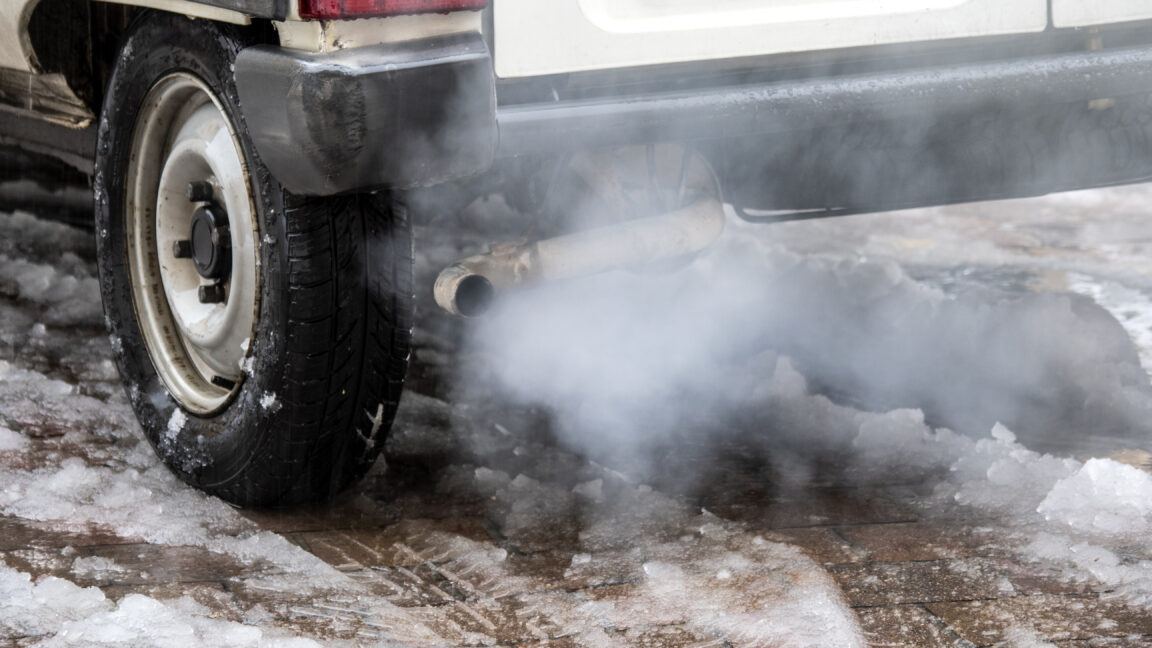ARSTECHNICA.COM
Streaming prices climb in 2025 after already surpassing inflation rates
It's going to be a long year Streaming prices climb in 2025 after already surpassing inflation rates Five services started charging more in January. Scharon Harding Jan 29, 2025 7:30 am | 23 Credit: Getty Credit: Getty Story textSizeSmallStandardLargeWidth *StandardWideLinksStandardOrange* Subscribers only Learn moreIf you were hoping for a respite from rising streaming subscription fees in 2025, youre out of luck. Several streaming providers have already increased monthly and/or annual subscription rates, continuing a disappointing trend from the past few years, with no foreseeable end.Years of pricing and value concernsSubscribers have generally seen an uptick in how much money they spend to access streaming services. In June, Forbes reported that 44 percent of the 2,000 US streaming users it surveyed who engage with content for at least an hour daily said their streaming costs had increased over the prior year.Deloitte's 2024 Digital Media Trends report found that 48 percent of the 3,517 US consumers it surveyed said that they would cancel their favorite streaming video-on-demand service if the price went up by $5.Similarly, in a blog post about 2025 streaming trends, consumer research firm GWI reported that 52 percent of US TV viewers believe streaming subscriptions are getting too expensive, which is a 77 percent increase since 2020. It added that globally, the top reason cited by customers who have canceled or are considering canceling a streaming service was cost (named by 39 percent of consumers), followed by price hikes (32 percent).In its Digital Video Forecast and Trends Q1 2025 report, eMarketer (a marketing, ads, and commerce research firm that merged with Insider Intelligence in 2020) found that subscription fees for ad-free streaming tiers have greatly outpaced inflation and pay TV increases since 2023, as shown in the graph below: Credit: eMarketer Pay TV packages and inflation have increased at similar rates in recent years. But over the past two years, streaming has gotten much more expensive relative to both, eMarketers report says.And people seeking ad-free streaming have had an increasingly expensive time since 2020, the research firm noted: Credit: eMarketer Meanwhile, some research shows that subscribers consider the quality of content available on streaming services to be sub par and/or declining. Thirty-six percent of respondents in Deloittes March report, for example, said that "the content available on streaming video services isnt worth the price." A Q2 2024 TiVo survey of 4,490 people in the US and Canada ages 18 and up found that fewer subscribers perceive their streaming services as having moderate to very good content. In Q2 2022, the percentage was 78.6 percent for ad-free subscribers, compared to 74.5 percent in Q2 2024. Ad-supported services also reportedly saw a drop here, going from 74.2 percent in Q2 2023 to 60.8 percent in Q2 2024.Price increases are happening as several streaming services are cutting back on their content libraries," eMarketers report says. "These issues have contributed to consumer dissatisfaction. Meanwhile, streaming services are finally appearing more profitable on paper.Despite criticisms around streaming prices and value and streaming evolving into a costly, bundled affair la cable, many streaming services have already upped prices for 2025.Below is a breakdown of those price hikes and the reasoning provided, as well as other likely factors, for the increases.FuboPrices for all of Fubo's English-language streaming subscriptions increased by $5 per month, The Streamable reported on Friday. That makes the live sports streaming platform's cheapest plan $85 and its most expensive $95.The news follows efforts from Fubo to block Venu Sports, a proposed sports streaming app that would have offered sports channels from Fox, Disney, and Warner Bros. Discovery (WBD) for $43/month. The conglomerates behind the app canned Venu shortly after Fubo dropped its antitrust case against the proposed app team-up. At the same time, Fubo announced that Disney was planning to buy a majority stake in Fubo. It's no coincidence that there's some customer blowback around Fubo's price hike and the timing.I hate Fubo. They killed Venu so that they could raise prices?!?! Never will they see my [money] again, a Reddit user wrote on the FuboTV subreddit this week.When asked for comment on customer gripes, Jennifer Press, Fubos communications SVP, attributed the price hikes to rising costs from our programming partners." She added that Fubo only makes adjustments when necessary while noting discounts for new customers.The company's new pricing and potential merger come as it has never turned a profit since its January 2015 launch. In its fiscal Q3 2024 earnings report released in November, Fubo reported a net loss of $54.7 million, down from $84.4 million in Q3 2023.NetflixLast week, Netflix raised subscription prices by as much as 16 percent, depending on the plan. The new monthly prices took effect immediately and sent the cheapest ad-free plan (Standard) from $15.50 to $18, the Premium ad-free tier from $23 to $25, and the Standard With Ads plans from $7 to $8.While announcing higher prices, Netflix also unveiled its largest quarterly subscriber gain ever, with 18.91 million people subscribing for a total of 301.63 million. eMarketer predicts Netflix will make $17.12 billion in US subscription revenues in 2025. But for Netflix, that isnt enough.Netflix attributed its first price increase since 2023 to programming costs. Netflix CFO Spencer Neumann told investors that it will increase content spending from $17 billion in 2024 to $18 billion, emphasizing "big, scripted TV series," live events, and original programming, while growing impactful licensing opportunities.Further, the price hikes favor those willing to subscribe to Netflix with commercials, as the ad-free Standard plan got the biggest price bump. Netflix plans to double its 2024 ad revenue in 2025, and these new prices should help those efforts.Raising prices since 2012Along its path to being the largest streaming service, Netflix has constantly raised prices since 2012, as The Verge recently illustrated. Since 2012, monthly fees for Netflixs Standard ad-free plan have increased from $8 to $18 across seven price hikes. The Premium ad-free plan went from $12 in 2013 to $25 across six price hikes. Netflix released its ad-free standard plan in 2023 and has now issued a $1 price hike.Netflix wont report subscriber numbers to investors anymore, giving us less insight into whats driving its strategy. But co-CEO Greg Peters has shown a commitment to growing revenue one way or another, telling investors last week:"We earn, right now, only 6 percent of the revenue opportunity in the countries and segments that we currently serve. And as long as we continue to deliver on improving the variety, the quality of our TV and film slate, we gradually expand the offering with newer content types, we believe well be able to increase that share progressively every year."Netflix also has strong customer loyalty compared to other streaming services. In September, the service had lower churn rates than its rivals, per Antenna. (Antenna says it sources data from various data firms with millions of permission-based, consumer opt-in, raw transaction records." The research firm says it cleans and models this raw data, and then subsequently weighs the panel to correct for demographic and behavioral skews.) Credit: Antenna Discovery+On January 7, WBD raised prices on its streaming service that isnt Max, Discovery+. The services ad-free and ad-supported monthly plans each increased by $1, bringing the former to $6 and the latter to $10 for new customers. Old subscribers will start paying the new prices on or after February 7.Discovery+ last raised prices in October 2023, bumping the price for an ad-free monthly subscription by $2 to $9. WBD didn't provide any official reasoning for the new prices. It's possible that Discovery+ wasn't expecting much blowback, considering the service's relatively small user base and comparatively low prices (Discovery+ has equal or cheaper monthly rates than every major subscription streaming service).Of course, Max remains WBDs streaming darling, with more content (it also includes Discovery+) and a larger subscriber base than Discovery+. Notably, though, in a February 2023 earnings call, WBD CEO David Zaslav said that Discovery+ had "very low" subscriber churn and was profitable. The above bar graph from Antenna also shows Discovery+ having a lower churn rate than Max. Perhaps WBD feels more open to testing subscribers' limits with these advantages at play.AMC+On January 15, the higher prices for AMC+ that AMC Networks announced in December took effect. Subscribers to the cable channels on-demand streaming service, (which includes content from some of AMC+'s sister streaming services, including Shudder), increased the subscription fee for its monthly ad plan by $2, to $7. The monthly fee for AMC+'s ad-free subscription increased $1, to $10, and its annual ad-free subscription increased $8, to $96.In its announcement, AMC Networks seemingly sought to rationalize the higher rates by noting the addition of new seasons of TV shows for 2024 and 2025 and plans to introduce more exclusive new films.In its Q3 2024 earnings report announced in November, AMC Networks reported a 5 percent increase in streaming subscribers compared to fiscal Q3 2023. Streaming revenues also increased 7 percent, with AMC citing year-over-year subscriber growth and price increases." AMC Networks also makes a lot of money ($81 million in Q3) by licensing content. And with AMC+ being cheaper than nonproprietary streaming services licensing AMC content, it had an opening to pull more money from its growing subscriber base.AMC Networks' overall ad revenue declined 10 percent in Q3 due to linear ratings declines and a challenging ad market, partly offset by digital and advanced advertising revenue growth" and putting more emphasis on the need for streaming revenue.YouTube TVOn January 13, YouTube TV subscribers started paying higher rates, which Google announced in December. The pricing scheme increases the monthly fee for the basic plan by $10 (13.7 percent) to $83.In an email to subscribers, Google blamed the changes on the rising cost of content and the investments we make in the quality of service.But that doesnt explain why Googles announcement came three days after Google claimed via X that YouTube TV was not getting a price hike, after a Verizon promotion suggested that current pricing for the service was $83/month. The practice isnt a good precedent for the streaming service that became America's fourth-largest cable TV provider by subscribers in February. Wall Street research firm MoffetNathanson predicted in March that YouTube TV would become the largest pay TV service by subscribers in 2026.YouTube TV has seen regular price hikes since it debuted at $35/month in 2017. In 2018, it went to $40, then $50 in 2019, $65 in 2020, and $73 in 2023.That said, YouTube TV hasnt announced any profitability, though MoffettNathanson predicted early last year that the service would be profitable in 2024 (no updates yet). New prices help with that goal while bringing YouTube TV pricing closer in line with rival service Hulu + Live TV, which starts at $83/month but also includes subscriptions to Disney+ and ESPN+ with ads.Bonus: Sling TVSling TV also started charging $6 extra per month for all of its plans. That change technically started on December 20, 2024, but many customers will pay the new rate for the first time this month. Sling blamed the change on unspecified, industry-wide "rising costs." But Sling has also struggled to maintain subscribers (although, it recently enjoyed an uptick there) and revenue over the years, and parent company EchoStar has struggled to stay profitable in recent quarters.Scharon HardingSenior Technology ReporterScharon HardingSenior Technology Reporter Scharon is a Senior Technology Reporter at Ars Technica writing news, reviews, and analysis on consumer gadgets and services. She's been reporting on technology for over 10 years, with bylines at Toms Hardware, Channelnomics, and CRN UK. 23 Comments







